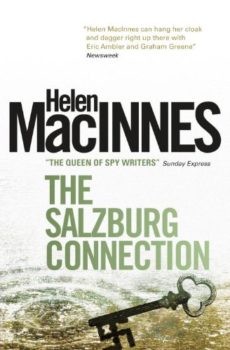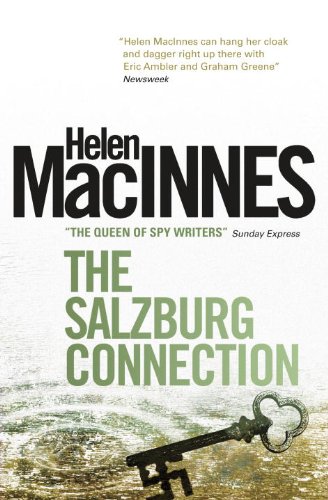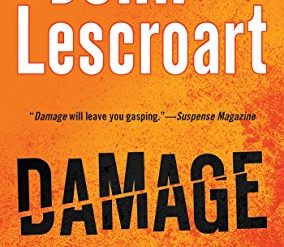
If the essence of drama is human conflict, then the business of espionage is tailor-made for fiction. Forgetting, of course, that most spies insist their work, like that of soldiers and police, consists of long stretches of boredom interspersed with brief and very rarely violent action. And, in all of recent history, the clash between Nazi Germany and the Allies, and the later conflict between the US and the USSR, offer the clearest opportunities for black-and-white portrayal of good versus evil in the spy game. But what if you could merge the two conflicts? What if you could devise a plot involving the SS, KGB, MI6, and CIA in one gloriously confusing contest? That could make for great reading, right? Well, Scottish-American author Helen MacInnes pulled that off with the 1968 publication of her classic spy novel, The Salzburg Connection. In her time, MacInness was called “the queen of spy writers.” And it’s easy to see why.
Estimated reading time: 3 minutes
MacInness’s novel, set in the mid-1960s, is grounded in a curious historical event. In 1959, divers had recovered a stash of £100 million pounds sterling in counterfeit currency hidden by the Nazis in Lake Toplitz, Austria, late in World War II. MacInness imagined another Nazi treasure hidden in the “Finstersee,” which is in fact another name for Lake Toplitz. But that fictional treasure didn’t consist of money, real or fake. It was a set of files with deadly implications for the West.
The Salzburg Connection by Helen MacInnes (1968) 532 pages ★★★★☆
A gloriously complex tale from “the queen of spy writers”
In The Salzburg Connection, the action revolves around Richard Bryant, an expatriate nature photographer who had worked with British intelligence in the war. His renewed contact with MI6 is now the representative of an American publisher who has agreed to buy a book of photos he’s working on. But when Bryant recovers the chest of Nazi documents from the lake and is killed for his efforts, all hell breaks loose. The complications surrounding the publisher’s contract bring William Mathison, the New York company’s attorney, to Austria to sort things out. And Mathison soon finds himself deeply embroiled in a complex game involving the SS, KGB, MI6, CIA, and both Swiss and Austrian Security. Along the way, he manages to fall in love as well. This is, after all, fiction.
About the historical setting
MacInnes wrote her novel barely two decades after the end of World War II. At the time, the SS underground was still active in German-speaking Europe. Frederick Forsyth famously wrote The Odessa File about a mysterious organization that facilitated the escape of key Nazis to South America. But even if as some historians insist ODESSA was entirely fictional, there was in fact an underground railroad that moved former SS members out of Europe. And large numbers of former Nazi officers were still on the ground in Austria, Switzerland, and Germany in the 1960s. In fact, the US government employed many of them in spy networks aimed at East Germany and the Soviet Union. So, although MacInness’s story is indeed fictional, it’s not entirely far-fetched. It’s a credible effort from “the queen of spy writers.”
For related reading
You might also enjoy my posts:
- The 15 best espionage novels
- Good nonfiction books about espionage
- The best spy novelists writing today
- Top 10 mystery and thriller series
- Top 10 historical mysteries and thrillers
And you can always find my most popular reviews, and the most recent ones, on the Home Page.


























